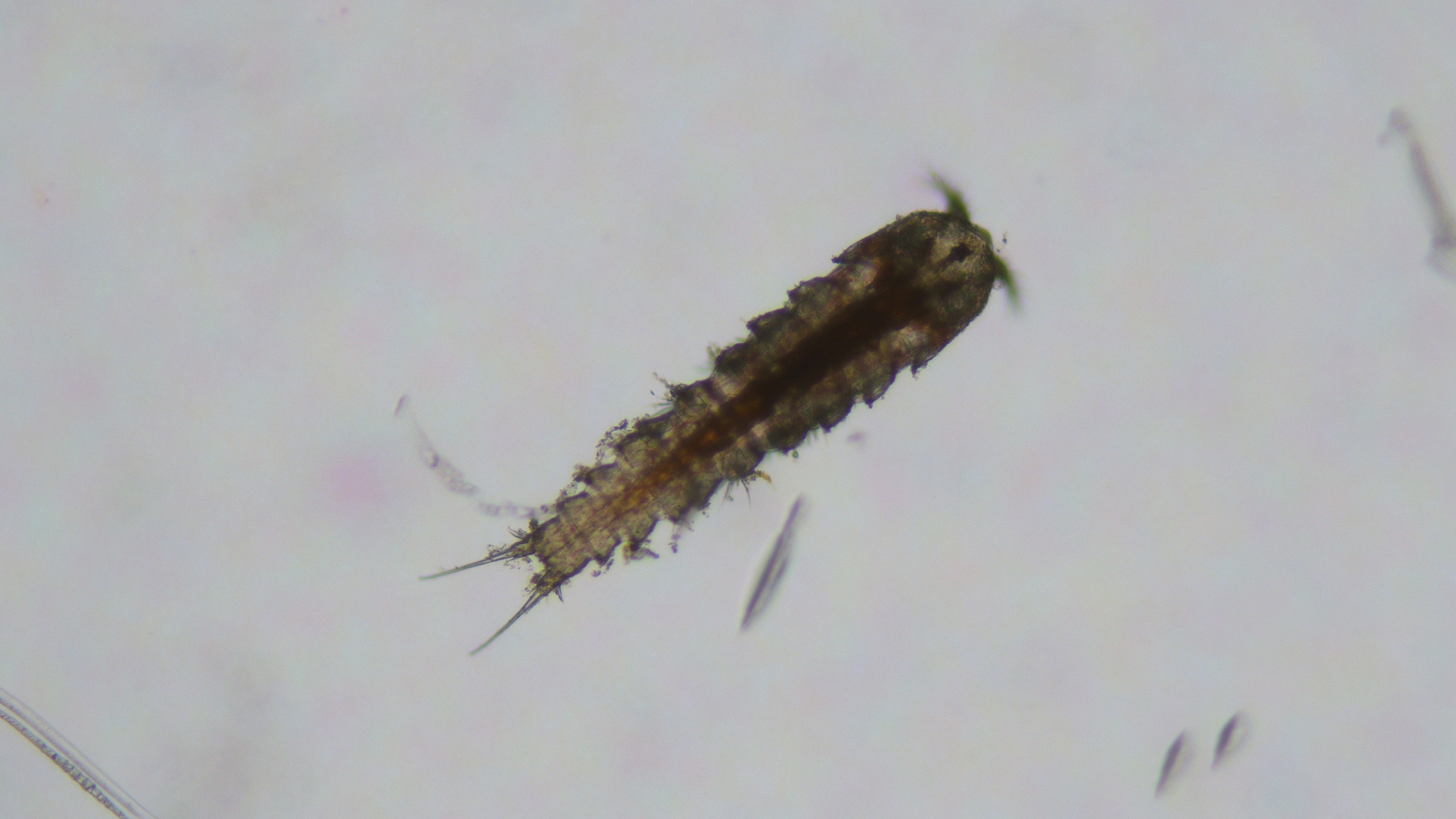Copepods are small crustaceans of about 1 millimeter in size. Although small, they are abundant and omnipresent: in freshwater, salt water and ground water. Different groups of copepods are specialised to live in open ocean, rock pools or sediments. They are the connection in the food web between primary production and larger consumers such as fish larvae. Bram Martin, PhD student at CMET (prof. Nico Boon) and Marine Biology department (prof. Marleen De Troch), investigates the interaction between copepods and bacteria.
As copepods look a bit like simplified lobsters, the same is true for their digestive tract. This consists only of a gut canal with a slightly larger and rounder fore gut than hind gut. Copepods pass their food quickly in 30 min. to an hour. As such, they don’t digest everything they eat and produce a lot of faecal pellets. Interestingly, copepods have coprohexic behaviour as they break apart their faces and reingest them. This coprophagic strategy helps them digest their food, similar to rabbits.
We looked at the gut bacteria of Platychelipus littoralis, a main copepod species in Western Europe. We found out through fatty acid analysis that their main food source was unsurprisingly diatoms, a type of algae. We dissected the guts from the copepods to look at the microbiome, and found that the gut microbiome of the copepod was different and more selective compared to the surrounding sediment. The bacterial families that we found in the gut were known to be associated with algae and known degraders of complex organic molecules. As such, it is possible that these bacteria assist the copepod in degrading food. With this research, we know more about the food web ecology of copepods living in sediments, one of the lesser studied topics in marine biology.
Here is the full story: https://www.int-res.com/abstracts/meps/v756/p19-29/
